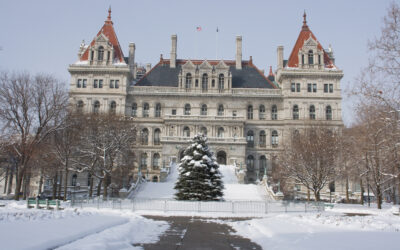In Formula 1 racing, rain changes the tenor of the race. The normally slick tires do not have the grip to handle a wet track, slowing the cars and amplifying the skills of the actual driver compared to other races. And if a race has even a threat of rain, it is discussed at great length by commentators and team engineers who are trying to adapt their strategy in real time. All the little details matter, and there can be a disconnect between the real-time data and what someone can visually see happening—even through a television set. It all results in commentator gems stating that the radar indicates it is currently raining, followed by the commentators’ laughter at the fact that they can see that no rain has fallen. Weather is complicated, yet it’s important to understand, especially with large sums of money on the line.
Such races and commentary exchanges ran through my mind when reviewing the 114 approved hurricane windstorm deductibles in New York state. I could recognize the importance of the clauses for homeowners and their insurance agents, but I could not imagine trying to figure out the terms in different policies on a good day. Where some policies contained the straight-forward, it-is-obviously-raining level definition of hurricane, many others have definitions that could be summed up by, “Well, I don’t know, stick your hand out the window.”
Just as I got accustomed to the policies referring to the data recorded by the National Weather Service, a carrier threw in the National Hurricane Center as the source of wind speed data. (Spoiler alert: The National Hurricane Center is part of the National Weather Service.)
Many policies contain straightforward language to define when a windstorm hurricane deductible is triggered. Even among those policies, the storm’s strength may vary. Plenty of policies have their own definitions for the trigger, which may be overly simple or complicated enough that only a meteorologist could tell you when the conditions had been met. This is unnecessary since insurance agents probably lack a background in meteorology, and having them try to figure out if the National Hurricane Center is part of NWS after an actual hurricane should not be required to help provide service to homeowners.
PIA is strongly advocating for a standardized definition for when a hurricane windstorm deductible would be triggered because, among the 114 approved triggers, there are variances and outright complications[i].
Prong 1: Hurricane strength
This is the clearest part of the hurricane windstorm triggers. While occasionally a definition refers to wind speed rather than the category of hurricane, this is primarily a linguistic choice.
The NWS defines hurricanes based on the recorded wind speed with Category 1 hurricanes having a wind speed of 74 miles per hour or more and Category 2 storms hitting 96 mph or greater. The definitions that define the storm on windspeed leave the door open for coverage where it may not have been a hurricane.
It’s probably the area where lawyers and meteorologists see things differently and this lawyer is thinking through every possible loophole despite having no experience with hurricanes. Every trigger definition includes some reference to the category of storm and/or wind speed.
Prong 2: Time frame
Most policies establish the same window of time to record the wind speed of the hurricane: 12 hours before the loss to 12 hours after the loss. It’s effectively a 24-hour window for the combination of recorded hurricane strength and loss to the house.
A few policies extend the time before the loss to 24 hours, creating a 36-hour window. A surprising number of policies do not have a time frame for the recorded strength of the hurricane, which has the potential for chaos.
While some agents and homeowners may identify strongly with the Norse trickster god Loki and actively support chaos, most would agree that hurricanes already bring enough of that to last everyone a lifetime—or at least the time it takes to recover from the damage. Policies need a defined trigger that would make it straightforward to determine whether the higher deductible applies.
Prong 3: Location
The location of the recorded storm is where my mind really began questioning whether I was reading English. Most policies have the same recorded location, which is landfall anywhere in New York state. It’s a very straightforward and, from my perspective, clear standard. The policies that veer off the standard definition start defying logic.
One policy referred to “landfall anywhere in the residence premises of the state of New York.” Multiple policies have one standard for hurricanes that make landfall in New York and a second standard for recorded wind speed in the county of the residence. A major carrier looks at both the state and county of the home. Several policies are limited to landfall in a coastal county—which I assume includes Westchester, since the company has approval to include hurricane windstorm deductibles in Westchester County. Maybe it defines coastal counties elsewhere or you think Westchester is obviously coastal.
Changing little, but clarifying everything
Overall, there really is not that much substantive difference between hurricane windstorm deductible triggers beyond the category of storm. At the same time, there are surprise differences and complications that make advising insureds of their exposure more complex. As interesting as it can sometimes be to listen to Formula 1 commentators discuss potential weather changes and the complications, the teams have the same tires, and it comes down to strategizing when to put them on the car.
PIA advocates for legislation to standardize the definition of windstorm to cut through the complications of meteorology and narrow down the factors that agents need to understand to best advise their clients.
More information about New York state homeowners coverage approved independent mandatory hurricane deductibles can be found here.
Additional resource
PIA members can access PIA multistate windstorm and hurricane deductible guide in the PIA QuickSource library.
[i] NYS DFS approved hurricane deductibles

Clare Irvine, Esq.
Clare Irvine, Esq., graduated from Fordham University School of Law and Arizona State University.





